What do candidates on the 18th Edition course actually do?
The course has two main objectives: candidates need to pass the City & Guilds examination but they also need to understand the Regulations and how to apply them at work.
The course is scheduled over 3 full days, with the examination on the fourth day. Given the complexity of the Regulations, it is quite an intensive course. We believe that this is time well spent, since many electricians have never studied the Regulations at the necessary depth for many years. This also helps to prepare them properly for any follow-up courses (such as the inspection and testing or design courses).
The course notes explain what the Regulations are trying to say in a helpful, informative way, whilst giving examples of the sort of questions that City & Guilds are likely to ask in the examination. Some sample pages from the course notes give an indication of this approach:
 |
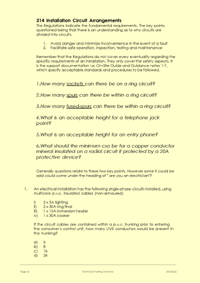 |
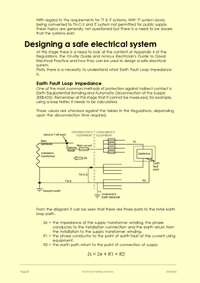 |
Page 7 of the 18th edition course notes: explaining the terminology and definitions used in the regulations |
Page 14 of the 18th edition course notes: looking at the standard circuit arrangements and how to determine which items require earthing etc |
Page 20 of the 18th edition course notes: here we look at the design procedure used to determine the sizes of wires used in electrical installations |
Many electricians find that some of the technical issues covered by the Regulations are very interesting to them - for example how to determine the size of a cable, deciding when earth bonding is required or working out the maximum numbers of cables that should be installed in conduit and trunking.
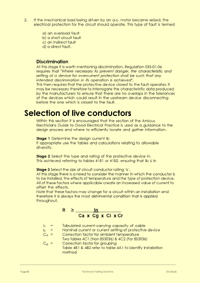 |
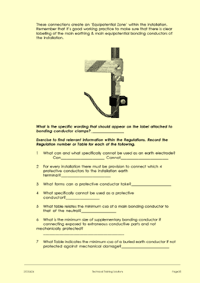 |
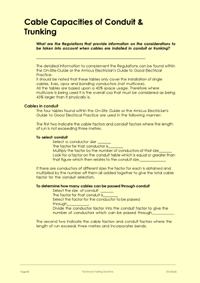 |
Page 28 of the 18th edition course notes: examining the equations used to specify the tabulated current ratings of the cables needed for a given circuit |
Page 35 of the 18th edition course notes: getting the candidates to decide when and how earthing should be applied |
Page 40 of the 18th edition course notes: assessing the capacities of trunking and conduit |
Candidates then look at various technical issues, for example those surrounding earth fault loop impedance values and how protective device ratings, disconnection times and earth fault currents are related:
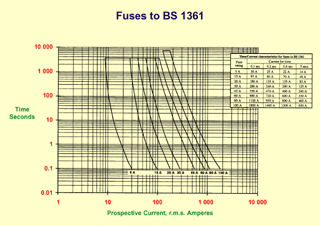 |
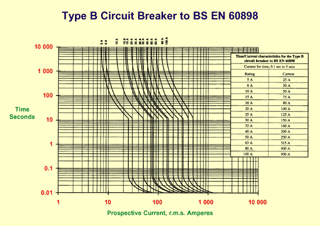 |
One of the practical exercises on the 18th edition course: Calculating fuse operating times from fault current values |
One of the practical exercises on the 18th edition course: Calculating circuit-breaker operating times from fault current values |
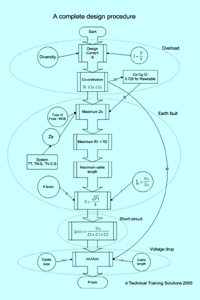
Candidates are kept engaged in the learning process by employing practical exercises that help them to understand the requirements of the Regulations.
One example of this is that during the course, the candidates look at the complete design procedure for electrical installations, which takes into account all the limiting factors of volt drop, earth fault loop impedance etc.
Candidates on this course are not expected to understand this completely - this is a subject dealt with in detail on the 18th Edition Design course, but for the purposes of this course it provides a useful framework within which they can explore some of the important technical issues.
One of these practical exercises is shown on the right: looking at the design procedure for electrical installations, taking into account all the limiting factors of volt drop, earth fault loop impedance etc.

Candidates on the 18th edition course are given their own copy of our Electricians Guide book to keep.
This pocket-sized book contains all the most useful reference material in the 18th Edition of the IET Regulations.
Our success rate in the examinations is very high (currently 98%) but we pride ourselves on ensuring that the candidates find the 18th Edition IET Wiring Regulations course enjoyable, informative and helpful in their daily work.
If you would like to see some of the support material used on the 18th Edition course for yourself, then please call us to arrange a visit to our offices in Kent. Alternatively, we can visit you anywhere in the British Isles.



